PUTRANJIVA
Putranjiva
Wall., Tent. Fl. Napal. 2: 61. 1826; Muell. Arg. in DC., Prodr. 15(2): 443. 1866; Benth. & Hook. f., Gen. Pl. 3(1): 277. 1880; Hook. f., Fl. Brit. Ind. 5: 336. 1890; Bingtao & Gilbert, Fl. China @ eFloras.org 11: 222; Radcliffe-Smith, Fl. Pak @ eFloras.org p. 16; Drypetes subgen. Putranjiva (Wall.) Herusawa; Liodendron H. Keng, J. Washington Acad. Sci. 41: 201. 1951.
Dioecious or monoecious evergreen trees; indumentum simple. Leaves alternate, petiolate, simple, margin entire or crenulate-serrulate, penninerved. Flowers axillary, unisexual, apetalous, male flowers densely glomerulate or fasciculate, female flowers 1(-3) per axil. Male Flowers: Pedicels very short. Calyx 3-6 parted, lobes imbricate, unequal. Petals 0. Disc 0. Stamens 2-4, filaments free or slightly connate, anthers basifixed, longitudinal dehiscence, extrorse. Pistillode 0. Female Flowers: Pedicels elongate, further extending in fruit. Calyx more or less as in male flower. Petals 0. Disc 0. Ovary ovoid or oblong-ovate, 2(-3)-locular, 2 ovules per loculus; styles 2-3(4), connate at base, short, spreading, dilated with broad, fleshy arms. Fruit drupaceous, long pedicelled, not lobed, indehiscent, mesocarp fleshy, endocarp hard or bony, by abortion 1- celled and 1- seeded. Seeds ovoid, crustaceous.
4 species
Putranjiva roxburghii
Putranjiva roxburghii
Wall., Tent. Fl. Napal. 2: 61. 1826; Muell. Arg. in DC., Prodr. 15(2): 443. 1866; Hook. f., Fl. Brit. Ind. 5: 336. 1890; Parker, For. Fl. Punj. ed. 1: 453. 1918 (Reprint 1973); Radcliffe- Smith, Fl. Pak @ eFloras.org p. 17; Drypetes roxburghii (Wall.) Herusawa, J. Fac. Sci. Univ. Tokyo Sec. III. Bot. 6 (6): 335. 1954.
A dioecious, moderate-sized tree, up to 15 m tall. Bark yellowish-grey, +/- smooth, wood hard. Branches pendent, twigs pubescent. Leaves alternate, petiolate, petioles 5-7 mm long, pubescent; leaf blade 7-11 cm x 2.5-4 cm, elliptic-oblong or elliptic-lanceolate, apex acute, obtuse or shortly acuminate, margin wavy and serrulate, base oblique, dark green, glossy above, pubescent when young, soon glabrescent or glabrous. Stipules small, 0.5 mm long, acute, caducous. Flowers dioecious, unisexual, small, axillary. Male Flowers: Flowers in rounded axillary clusters or contracted racemes on the main or on short axillary branches, pedicels very short. Calyx greenish-yellow, ca. 1-1.5 mm long, 3-5-lobed, lobes imbricate, apex ciliate. Petals 0. Disc 0. Stamens 1-5, usually 3, 2 or more filaments connate at base; anthers large, ca. 1.5 mm x 1.5 mm, erect, globose, bithecous, dehiscence by broad longitudinal slits. Pistillode 0. Female Flowers: Green, solitary or 2-3 together; pedicels 8-13 mm long, extending in fruit. Calyx 1.5-2 mm, 3-5-lobed, lobes ovate or oblong, 1.5-2 mm x 1-1.5 mm, upper margin ciliate, yellowish green, lobes valvate or imbricate. Petals 0. Disc 0. Ovary ca. 3.5 mm x 2.5 mm, ovoid-fusiform tapering into style, white tomentose, 3(-4)-locular with 2 ovules per loculus, placentation axile; styles 2-3, occasionally 4, connate at base, short, spreading, dilated with broad, fleshy, papillose, green arms. Fruit a drupe, ovoid-ellipsoid, 1.3-1.6 cm x 1-1.3 cm, grey-tomentose, pedicels 1.3-2 cm long, endocarp pointed, rugose, very hard, 1-seeded. Seed ovoid, ca. 1.3-0.8 cm.
Common Names: Putaranjiva, Lucky Bean Tree, Child’s Amulet Tree, Child-life Tree; Putajan, Putijia, Putrajiv, Jiaputa (Hindi)
-1528.jpg)
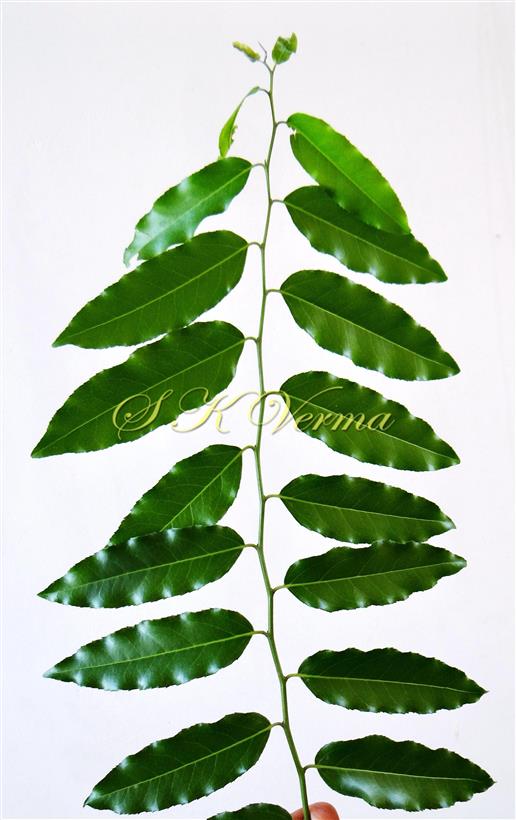
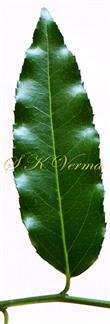
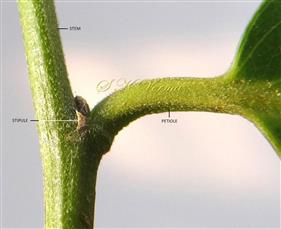
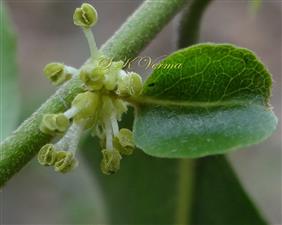
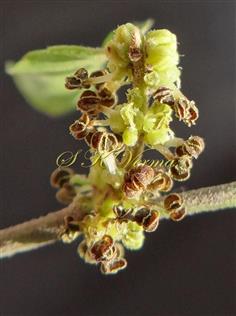
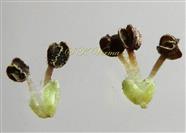
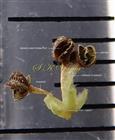
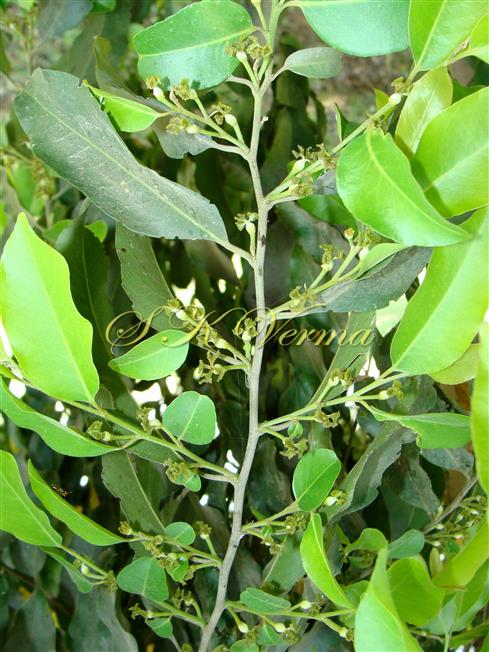
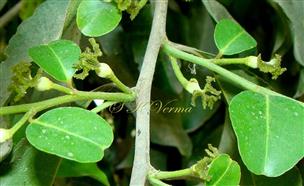
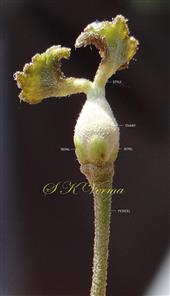



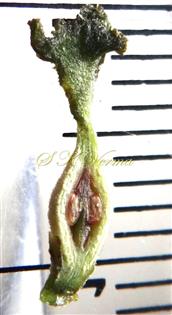
-DSC08443-.jpg)
-DSC08444.jpg)
-DSC08445.jpg)

-1528.jpg)










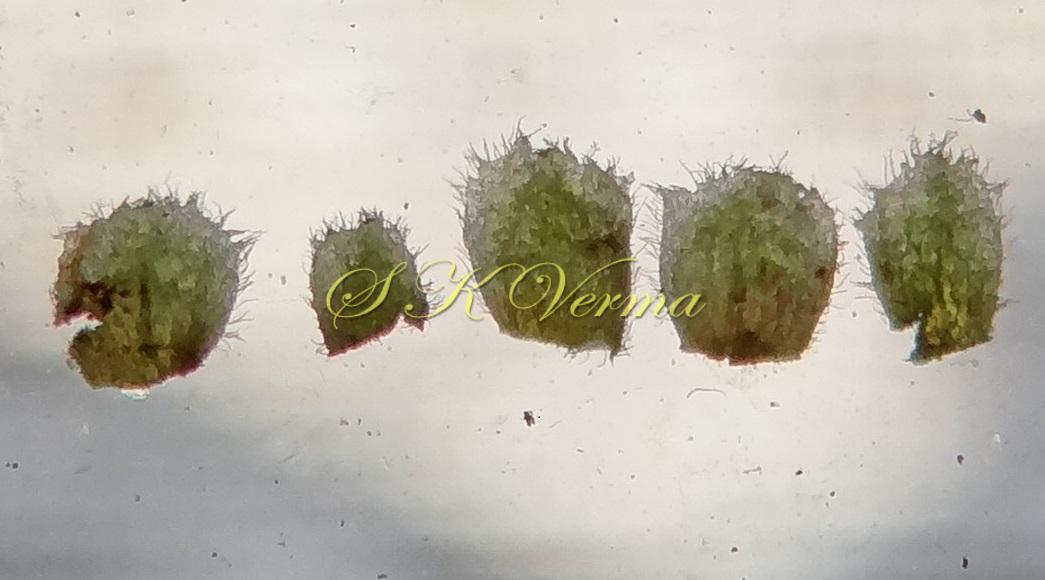
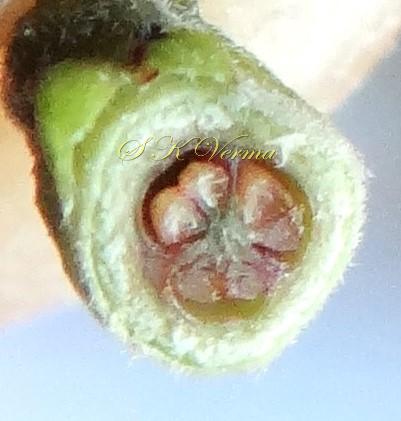


-DSC08443-.jpg)
-DSC08444.jpg)
-DSC08445.jpg)